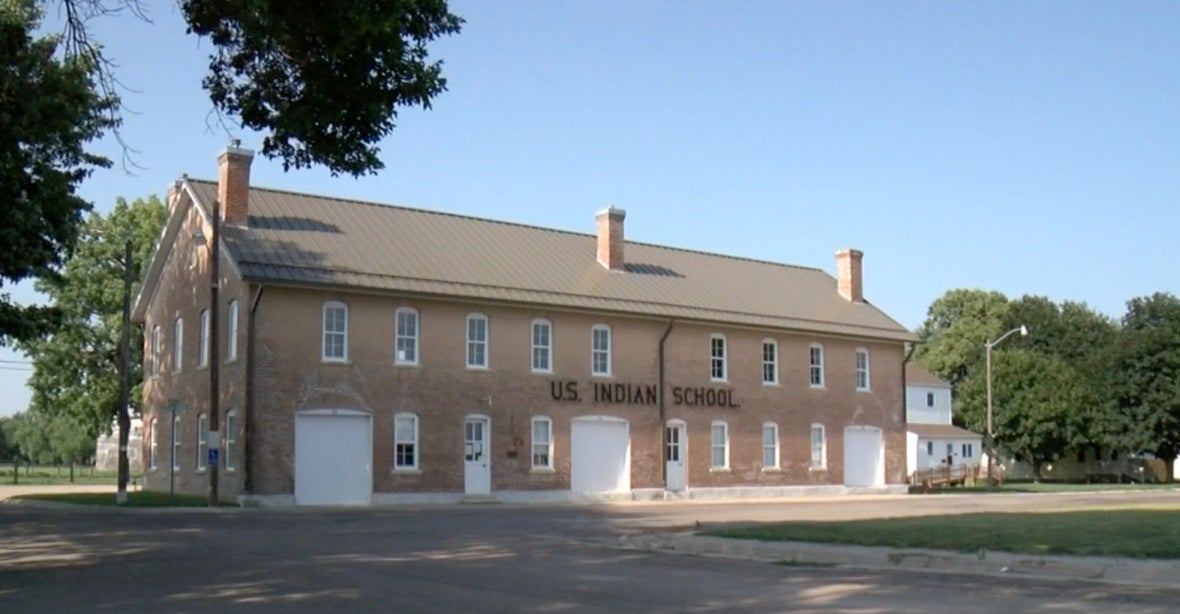Researchers identify 102 Native American children who died at government-run boarding school in Nebraska
Discovery comes as US government is carrying out a review into federally-operated Native American boarding schools

Your support helps us to tell the story
From reproductive rights to climate change to Big Tech, The Independent is on the ground when the story is developing. Whether it's investigating the financials of Elon Musk's pro-Trump PAC or producing our latest documentary, 'The A Word', which shines a light on the American women fighting for reproductive rights, we know how important it is to parse out the facts from the messaging.
At such a critical moment in US history, we need reporters on the ground. Your donation allows us to keep sending journalists to speak to both sides of the story.
The Independent is trusted by Americans across the entire political spectrum. And unlike many other quality news outlets, we choose not to lock Americans out of our reporting and analysis with paywalls. We believe quality journalism should be available to everyone, paid for by those who can afford it.
Your support makes all the difference.Researchers have identified 102 Native American children who died at a government-run boarding school in Nebraska in the latest troubling glimpse into the US’s past treatment of Indigenous people.
The students, most of them young children, died while attending the Genoa US Indian Industrial School in Genoa between 1884 and 1934, according to the Genoa Indian School Digital Reconciliation Project.
Ranging in age from four years old to early 20s, many of the children died from diseases such as tuberculosis, pneumonia and measles.
However, based on accounts in local newspapers at the time, researchers also uncovered a number of tragic accidents including the drowning death of a 16-year-old boy in 1909.
Another student was also killed after being hit by a freight train while one boy was accidentally shot dead by another student while they were playing with firearms on the school grounds, reported Omaha World-Herald.
Margaret Jacobs, a professor of history at the University of Nebraska-Lincoln and co-director of the project, told the outlet that the true death toll of students at the federal boarding school is likely to be much higher than the 102 so far identified.
She said the children’s names will not be released publicly until their families and tribal leaders have been contacted.
“These children died at the school; they didn’t get a chance to go home,” she said.
“I think that the descendants deserve to know what happened to their ancestors.”
The discovery of the children came as researchers continue to search for the school cemetery using ground-penetrating radar in recent weeks.
The cemetery has been documented in records but the search has so far proved unfruitful, made more challenging because records many records were destroyed when the school shuttered in 1934.
Calls have been mounting to uncover the extent of the nation’s dark past at Native American boarding schools after 215 Indigenous children, some as young as three, were found at a former Canadian boarding school in May.
Between 1869 and 1978, hundreds of thousands of Native American children were torn from their families and forced to go to boarding schools run by the federal government or churches.
The schools aimed to teach the children what they thought of as American culture and the students were punished and abused if they used their Native languages.
An unknown number of children died at the schools.
Of 25 federally-run boarding schools in one system, the Genoa Indian Industrial was among the largest and was home to almost 600 students at a time at its peak.
In June, the US government announced the launch of a review into what took place at the schools.
US Interior Secretary Deb Haaland said the investigation would “uncover the truth about the loss of human life and the lasting consequences” of the government-run schools.
It is also working to compile records on the schools, their burial sites and identify the names and tribal affiliations of students.



Join our commenting forum
Join thought-provoking conversations, follow other Independent readers and see their replies
Comments